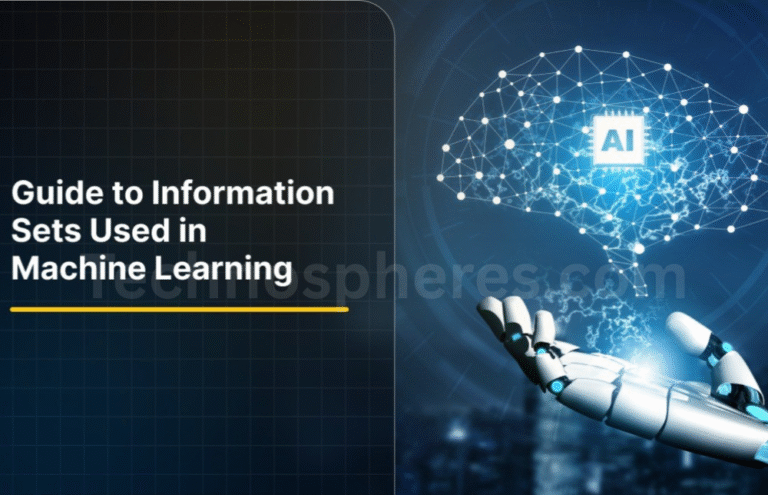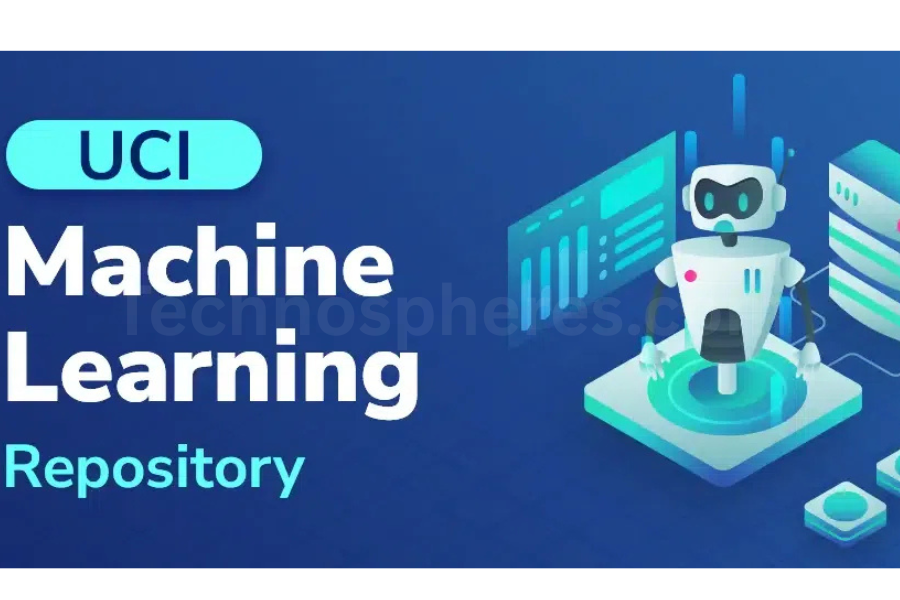
The UC Irvine Machine Learning Repository
What is the UC Irvine Machine Learning Repository?
The UC Irvine Machine Learning Repository is a very famous and reachable for public, collection of datasets created for use in machine learning research work and schooling. Organized by the University of California, Irvine, it gives us a proper dataset for algorithm criterion, experiments, and use for Education. It provides us a general beginning point for students, teachers, and research teams checking and comparing different machine learning models.
History and Background
The receptacle was established in 1987 by David Aha, Dennis Kibler, and Albert Kaelbling at UCI’s Department of Information and Computer Science. It began as a user-friendly archive to assist laboratory studies in ML and has since built into a central resource. After the growth of decades, it has played a essential role in building the early stages of machine learning as a field by providing data available at a time when being accessible was very rare.
Importance in the Machine Learning Community
The UC Irvine Machine Learning Repository is considered as a standard point of reference in machine learning. Many basic studies, algorithms, and researches have been authorized taking help from its datasets. It ensures consistency across all the experimentations by allowing access to datasets that are:
- Standardized and well-managed,
- Frequently studied in academic experimentations,
- Beeter to use for comparative judgements of ML models,
- Easy to reach for both dummies and masters.
Structure and Organization Categories of Datasets
Datasets in the UCI repository are broadly categorized by the type of work they assist. These are:
Classification
Regression
Clustering
Time-series
Multi-variable
Text
Multimedia
Other/Complex types
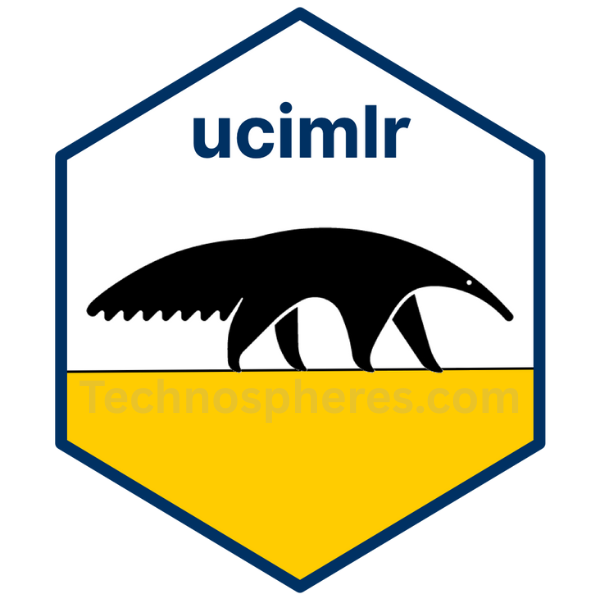
Metadata and Dataset Descriptions
Every dataset in the repository is accompanied by detailed metadata, which typically includes:
- Title and abstract
- Source and creator information
- Number of instances and attributes
- Attribute information
- Missing values
- License and citation instructions
Access and Interface Overview
The UCI Repository offers a simple web-based interface:
- Datasets are titled
- Users can search or filter datasets by work, type, or subject.
- Each dataset page provides downloadable files
- The interface user-friendly, ensuring easy and fast access.
Dataset Types and Domains
Classification Datasets
These are the most famous datasets in the repository. In a categorization of dataset, the goal is to recognize a specific label or type. Each data instance is titled with one of a specific set of classes.
Example:
The Iris dataset (predicting flower species) and Breast Cancer Wisconsin dataset (predicting benign/malignant tumors).
Regression Datasets
These datasets are used to foresee a continuous numerical state rather than a class title.
Example:
The Wine Quality dataset, where the reason is to predict a wine’s quality score based on chemical ingredients.
Clustering Datasets
Collecting datasets do not involve pre-explained labels. They are used for free-learning, where the goal is to summarize alike instances without prior knowledge of the types.
Example:
The Glass Identification dataset, mostly used to see if glass types can be collected based on their chemical composition.
Time-Series and Sequential Data
These datasets include data points grouped over time, creating them as good for time-series forecasting or sequence modeling as it can be.
Example:
The Beijing PM2.5 dataset, where pollution levels are measured over time to foresee future conditions.
Text and NLP Datasets
These includes natural language data, for example, documents, sentences, or words, and are used in text categorization, sentiment analysis, and modeling of language.
Example:
The SMS Spam Collection dataset, used to identify messages as spam or safe.
Image and Multimedia Data
Though limited compared to modern depositing, UCI has some datasets including optical or sensory data, better set for tasks like object recognition or signal identification.
Example:
The Statlog (Image Segmentation) dataset, which involves pixel-level classification of pictures parts.
Real vs Synthetic Data
- Real datasets are gathered from real-life experimentations
- Synthetic datasets are artificially created for experiments, mostly to highlight specific challenges like noise, imbalance, or shape.
Example:
- Real: Heart Disease dataset
- Synthetic: SPECTF dataset
Popular Datasets and Use Cases
Iris Dataset
- One of the most iconic datasets in machine learning, the Iris dataset consists of 150 instances and 4 specifications showing measurements of iris flowers from three species.
- Use Case: Often used for student classification work, teaching data representation, and application gathering or dimensionality reducing algorithms as PCA.
Wine Quality Dataset
- This dataset also include physicochemical characteristics of red and white wines and goal is to foresee a quality score (0–10). It has continuous features and is mostly used for regression processes.
- Use Case: Prediction of wine ratings based on lab test results; a well-known real-life example for retrogression and improper classification.
Adult (Census Income) Dataset
- Includes demographic information from the US Census and asks whether an individual earns over $50K per year.
- Use Case: Used for binary classification, feature engineering, and studies because to its socioeconomic applications.
Heart Disease Dataset
- Made up of clinical data for looking forward for the presence or absence of heart disease in patients.
- Use Case: Medical tests using classification, logistic retrogression, and decision trees; a key dataset for health-based checking modeling.
Breast Cancer Wisconsin Dataset
- Used to differentiate between benign and malignant tumors based on cell features like radius, texture, and smoothness.
- Use Case: Mostly used in binary classification, ROC analysis, and model validation in healthcare implications.
Student Performance Dataset
- Collects student performance data from Portuguese schools with characteristics like study time, absences, and parental schooling.
- Use Case: Predicting student success or failure, learning analytics, or diving into social factors affecting academic results.
Real-World Applications in Research and Industry
UCI datasets are mostly used in:
Benchmarking algorithms
Curriculum design
Proof-of-concept models
Feature selection and preprocessing experiments
Bias/fairness evaluation

Using the Repository for Projects
How to Choose the Right Dataset
- Define your task: Categorization, retrogression, grouping, etc.
- Assess data complexity: Selection based on your skill level and quality of model.
- Check data size: Ensure it’s accordant with your reckoning resources.
- Domain relevance: Use datasets that affiliate with your industry or study interest.
- Quality and completeness: Prefer well-managed datasets with lower number of missing values.
Dataset Preparation and Preprocessing
Before using UC Irvine Machine Learning Repository datasets in any ML pipeline, key preprocessing steps include:
- Data cleaning: Remove null values, fix typos, standardize formats.
- Normalization: Scale features to the same range.
- Encoding categorical features: Encode label or encode one-hot.
- Splitting data: Train-test split, often with stratification for categorization.
Best Practices for Working with UCI Datasets
Data Cleaning and Transformation
Clean data makes sure the exact model performance:
- Remove duplicates
- Handle missing values
- Fix formatting issues
- Transform variables
Feature Selection and Engineering
Improving dataset quality through:
- Selecting relevant features
- Creating new features
- Dimensionality reduction
Handling Missing or Imbalanced Data
Here’s a table summarizing common methods:
| Issue | Technique |
| Missing Numerical Data | Mean/Median Imputation K-Nearest Neighbors Imputation Drop Rows/Columns |
| Missing Categorical Data | Mode Imputation “Unknown” Category |
| Imbalanced Classes | Oversampling (SMOTE) Under sampling Class Weights Ensemble Techniques |
Ethical Use and Licensing
While UCI datasets are freely available, users must:
- Review licenses or use of notes
- Avoid using sensitive data immorally
- Respect contributors’ intentions
- Ensure fairness and fairness checks Top of Form
Contribution and Community Involvement
Submitting a Dataset
The UCI Machine Learning Repository let the researchers and users to contribute datasets. To submit, users mostly:
Fill out a submission form available on the respective site.
Provide detailed metadata, which involve characteristics, descriptions, task type (categorization, retrogression), and source information.
Submit data files in standard formats (.CSV, .data, or ARFF).
Await review and communication from the UCI staff before it goes live.

Guidelines for Contributors
Key recommendations for dataset donors are:
- Ensure dataset integrity
- Include complete documentation
- Avoid personally identifiable information (PII)
- Provide citation guidelines
Community Resources and Forums
While UCI doesn’t provide its own explanation forum, its datasets are mostly explained in:
- Stack Overflow, Reddit / Machine Learning, and Cross Validated
- Kaggle discussions
- Academic forums and GitHub
Educational and Research Value
Use in Academic Courses
UCI datasets are widely adopted in:
- Introductory machine learning courses
- Hands-on assignments and labs
- Used in MOOCs 8.2 Benchmarking Algorithms
The reason is that they are well-explained and authorized, UCI datasets are used to:
- Criterion algorithms like SVM, k-NN, Decision Trees, and Neural Networks.
- Contrast results across researches and libraries.
- Experiments preprocessing pipelines, characteristics collection techniques, and model approval techniques.
UC Irvine Machine Learning Repository in Research Publications
Many Basic and new research papers use UCI datasets for:
Validation of new ML methods or theories.
Demonstration of improvement in accuracy of model or efficiency.
Reproducibility in research, since the datasets are publicly reachable and well-managed.
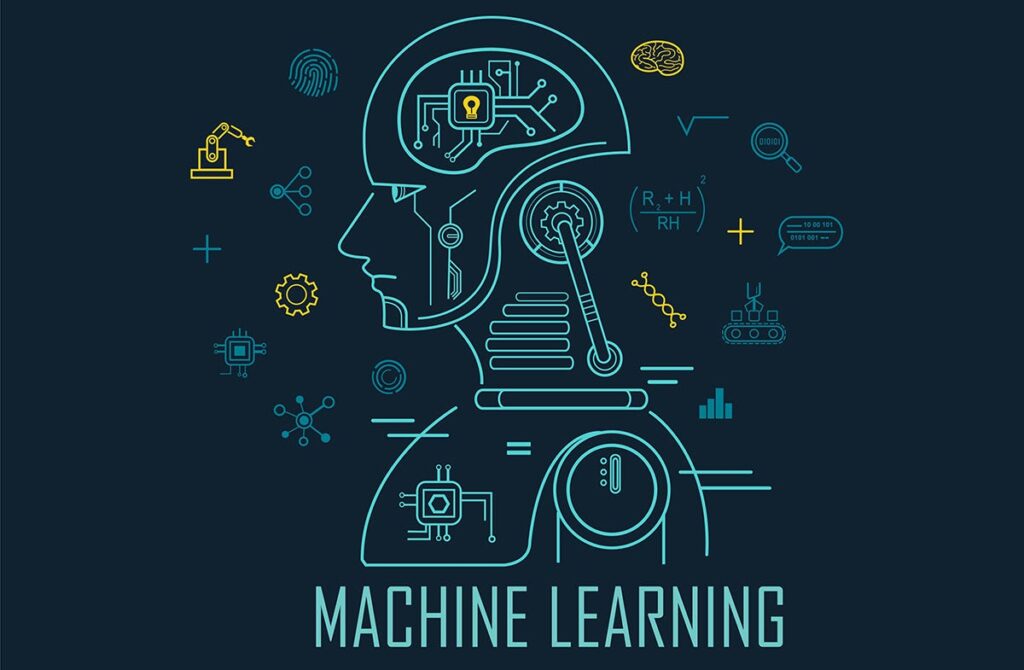
Comparing UCI with Other Dataset Repositories
Kaggle
Kaggle is a platform for competitions, schooling, and explaining code, with thousands of datasets:
- Pros: Large datasets, notebooks, community insights, competitions.
- Cons: Not all datasets are clean or standardized
Google Dataset Search
A search engine for datasets across the web, indexing government, education, and social depositing:
- Pros: Broad scope, basic search experience.
- Cons: No dataset hosting, quality have variation.
Open ML
An open platform for sharing datasets, models, and experiments:
- Pros: API accessible, reproducibility tracking, integration.
- Cons: Steeper learning curve; lower number of beginner-friendly resources.
Data.gov and Others
Here’s a comparison table to highlight differences among UCI and other repositories:
| Repository | Focus | Typical Use Case | Curation Level | Community Features | License/Access |
| UCI Repository | Standard ML datasets | Academic/research, education | High | Minimal (external forums) | Mostly open, some CC BY |
| Kaggle | Competitions, real-world datasets | Modeling, EDA, sharing code | Varies | High (notebooks, forums) | Open, varied licenses |
| Google Dataset Search | Aggregator/search engine | Dataset discovery | Depends on source | None | Varies |
| OpenML | ML experimentation & sharing | Benchmarking, reproducible workflows | High | High (experiments, forums) | Mostly open (MIT, CC) |
| Data.gov | US Government data portal | Policy, economics, social science analytics | Medium | None | Open government data |
| AWS Registry, Microsoft Azure Datasets | Cloud-hosted datasets | Scalable ML, big data modeling | Medium-High | Limited | Cloud usage terms apply |
Challenges and Limitations
Dataset Size and Scalability
Many UCI datasets are small and basically made for early machine learning tests. While best for learning and experiments of algorithms, they may not show:
- Modern big data scenarios
- High-dimensional data challenges
- Cloud-scale model training
Lack of Updates
Some datasets have not been updated in years or decades, which can result in:
- Outdated contexts
- Lack of newer, more representative samples
- Incompatibility with modern ML tasks
Limited Metadata in Some Cases
While many datasets have detailed descriptions, others may not have:
- Clear explanations of characteristics or units
- Data source information
- Proper class labels or missing value indicators
Addressing Dataset Bias
Several UCI datasets have inherent biases related to race, gender, or socioeconomic status:
- Can lead to in-correct model predictions
- Important for users to take bias audits
- Requires applying ethical AI principles
Future Developments and Improvements
Modernization of UI/UX
Future developments could include:
- Searchable dataset filters
- Dataset previews and imagery of summaries
- Integration with GitHub, Kaggle, or Google Colab
- Engaging notebooks and API access
Expansion of Dataset Categories
To continue with the evolving ML landscape, UCI could include:
- Multimodal datasets
- Sensor and IoT data
- Reinforcement learning environments
- Multilingual datasets
Improved Community Features
Recently, UCI lacks built-in community engagement. Possible enhancements are:
Comment and rating systems per dataset
Profile of contributor and leaderboards
Publicly shared preprocessing pipelines and notebooks
Dataset version control and reporting of issues
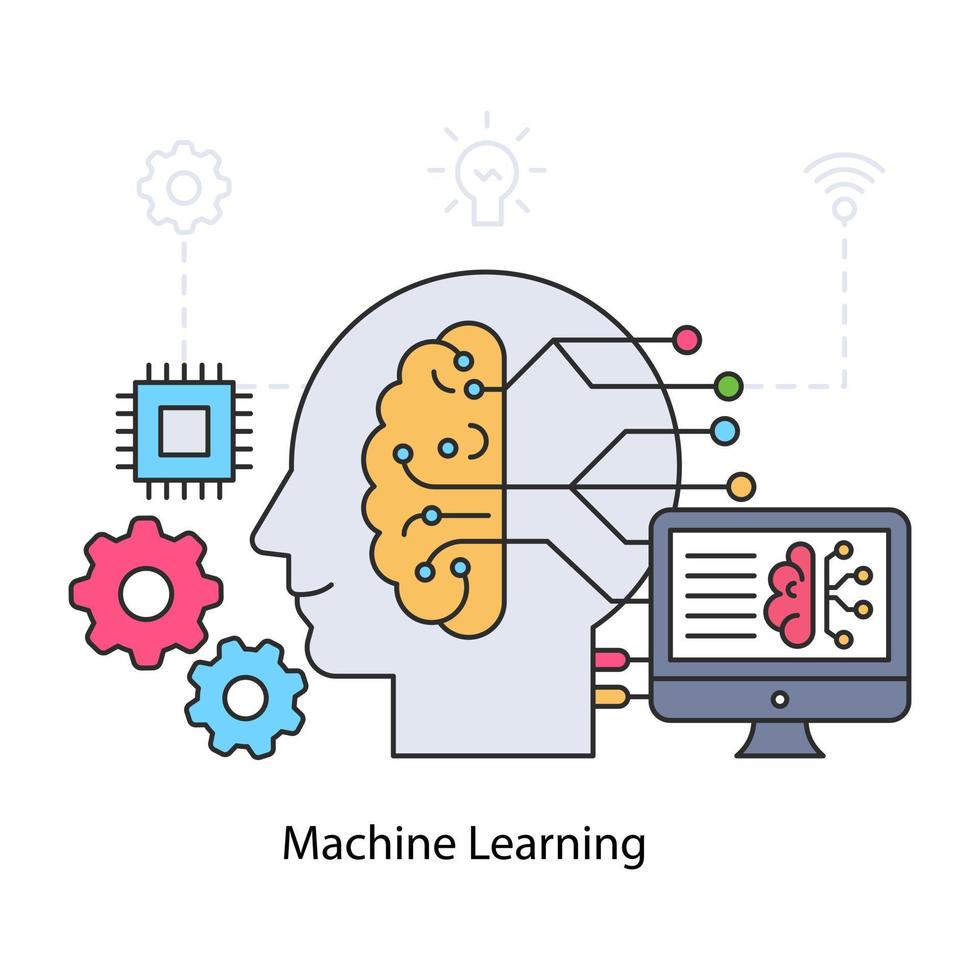
Conclusion
The UC Irvine Machine Learning Repository has been basics of ML experimentations and education for almost a very long time. It offers variety datasets for categorization, retrogression, and grouping, mostly used for creating standard, schooling, and research. Regardless of its strengths, it has its limitations for instance dataset aging, lack of scaling and incompletion of metadata. The UCI depository resume to work as a go-to resource for learners, teachers, and researchers. With thoughtful updates and increased community engagement, it can stay relevant and effective in the next duration of data-driven innovation.
Frequently Asked Questions (FAQs)
Is the UCI Repository free to use?
Yes. The datasets are publicly reachable and free to download for everyone, Schooling, and experiments.
Can I use UCI datasets for commercial intent?
Mostly, yes, but you should check the licensing or usage terms provided with each dataset. Most are openly licensed, but some have Schooling-use or citation criterion.
How can I cite a UCI dataset in my research?
Each dataset page includes citation instructions. Usually, you cite the real paper attached with the dataset and/or the UCI repository itself.
Are the datasets processed or raw?
Most datasets are provided in raw form, meaning users are accountable for:
- Cleaning data
- Handling missing values
- Encoding different types
Can I download entire dataset collections at once?
UCI does not currently offer a bulk download option. You must have to download each dataset.
Read more about Machine Learning on Technospheres.

